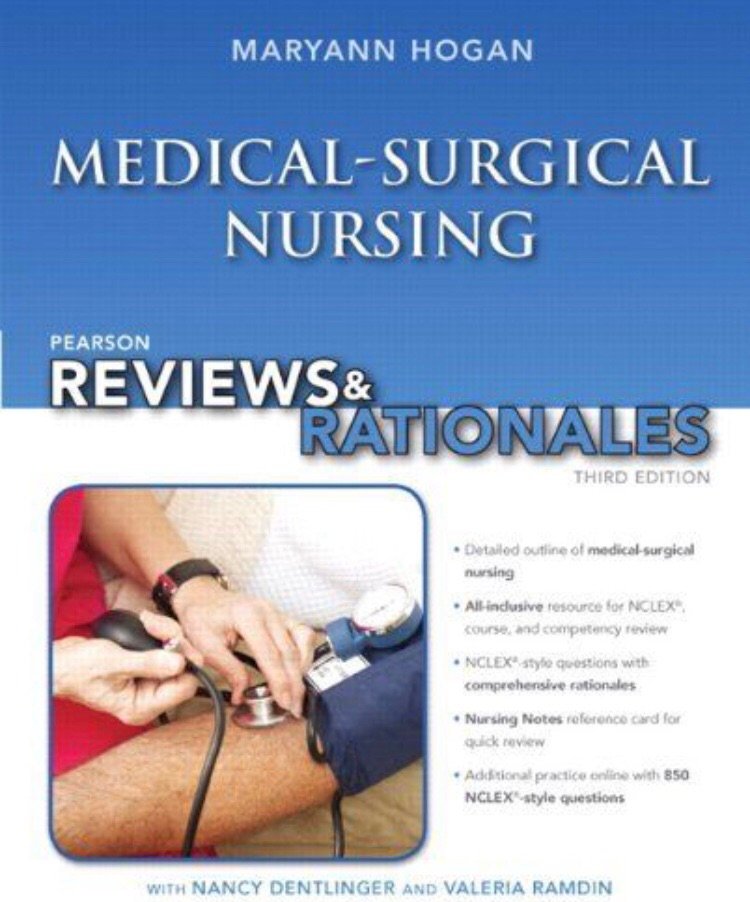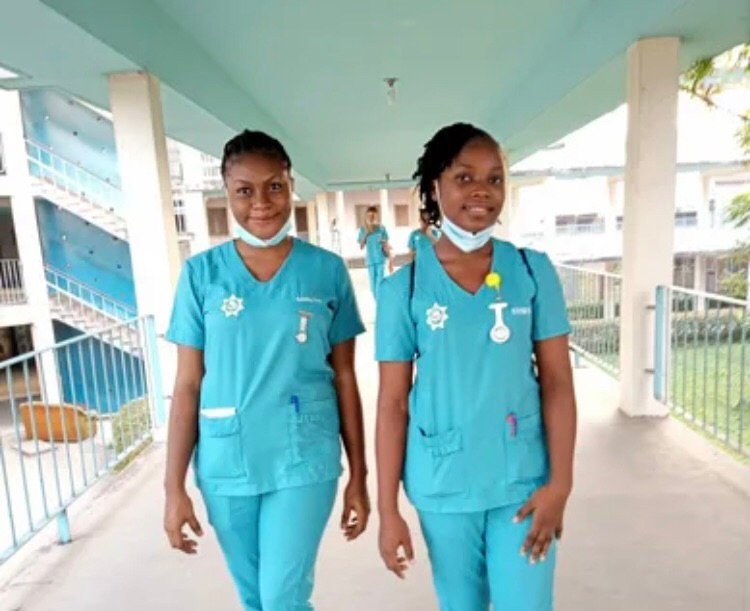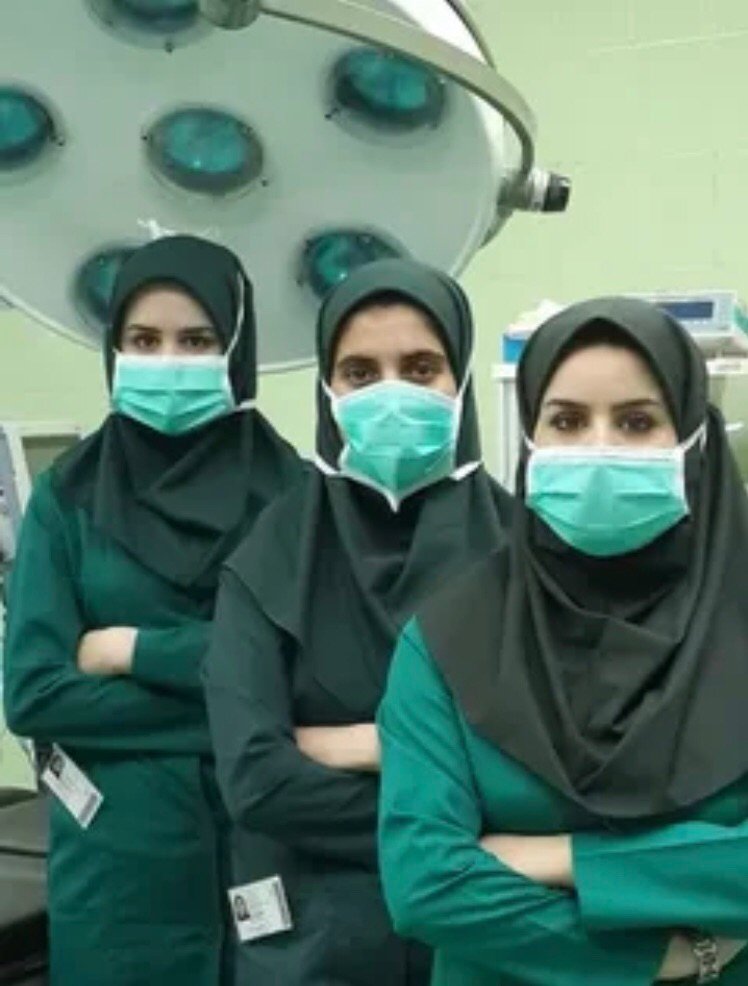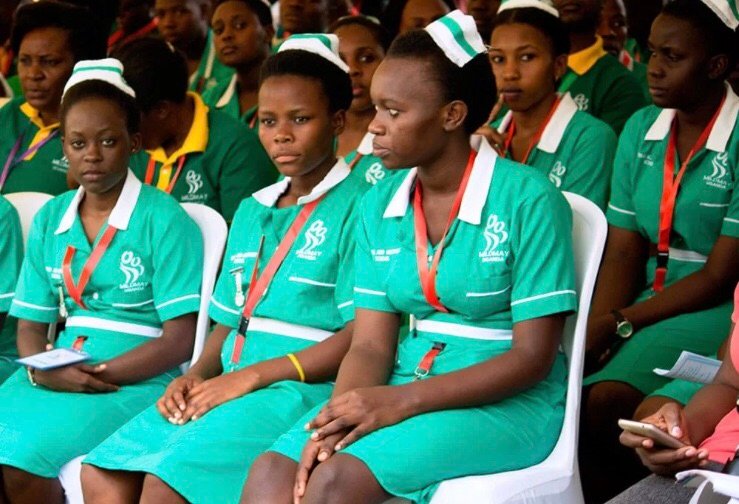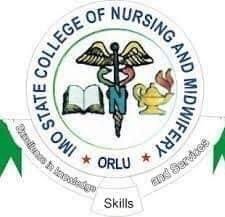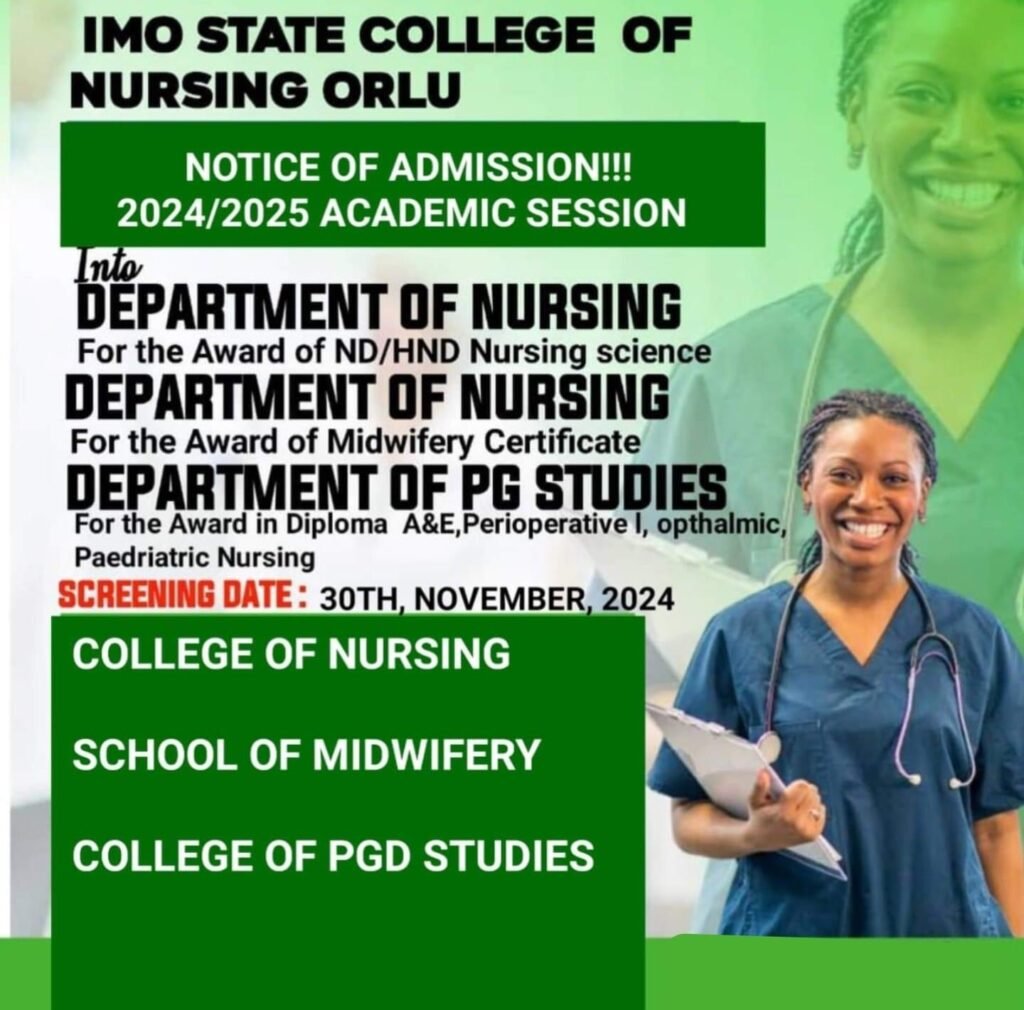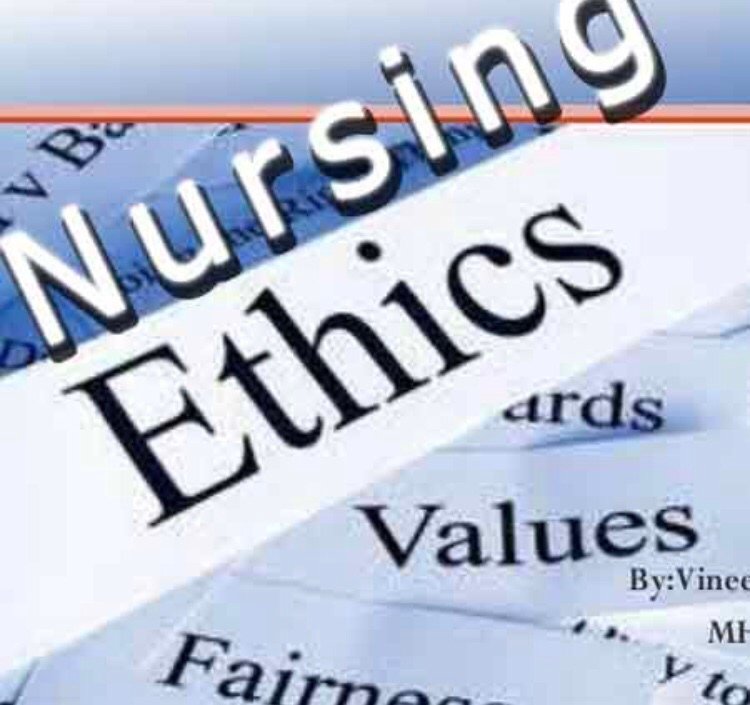Today, we shall be looking at medical-surgical nursing questions and answers. The aim is to prepare us ahead of any professional exam.
1. The nurse counts an adult’s apical heartbeat at 110 beats per minute. The nurse describes this as:
- asystole.
- bigeminy.
- tachycardia.
- bradycardia.
2. A client has an elevated AST 24 hours following chest pain and shortness of breath. This is suggestive of which of the following?
- Gallbladder disease
- Liver disease
- Myocardial infarction
- Skeletal muscle injury
3. An adult has a coagulation time of 20 minutes. The nurse should observe the client for which of the following?
- Blood clots
- Ecchymotic areas
- Jaundice
- Infection
4. A prothrombin time test should be performed regularly on persons who are taking which medication?
- Heparin
- Warfarin
- Phenobarbital
- Digoxin
5. Which prothrombin time value would be considered normal for a client who is receiving warfarin (Coumadin)?
- 12 seconds
- 20 seconds
- 60 seconds
- 98 seconds
6. The nurse is caring for a client who is receiving heparin. What drug should be readily available? 1. Vitamin K
- Caffeine
- Calcium gluconate
- Protamine sulfate
7. An adult who is receiving heparin asks the nurse why it cannot be given by mouth. The nurse responds that heparin is given parenterally because:
- it is destroyed by gastric secretions.
- it irritates the gastric mucosa.
- it irritates the intestinal lining.
- therapeutic levels can be achieved more quickly.
8. An adult who is admitted for a cardiac catheterization asks the nurse if she will be asleep during the cardiac catheterization. What is the best initial response for the nurse to make?
- “You will be given a general anesthesia.”
- “You will be sedated but not asleep.”
- “The doctor will give you an anesthetic if you
are having too much pain.” - “Why do you want to be asleep?”
9. During the admission interview, a client who is admitted for a cardiac catheterization says, “Every time I eat shrimp I get a rash.” What action is essential for the nurse to take at this time?
- Notify the physician.
- Ask the client if she gets a rash from any other
foods. - Instruct the dietary department not to give the
client shrimp. - Teach the client the dangers of eating shrimp and other shellfish.
10. The nurse is preparing a client for a cardiac catheterization. Which action would the nurse expect to take?
- Administer a radioisotope as ordered.
- Give the client a cleansing enema.
- Locate and mark peripheral pulses.
- Encourage high fluid intake before the test.
11. A young adult with a history of rheumatic fever as a child is to have a cardiac catheterization. She asks the nurse why she must have a cardiac catheterization. The nurse’s response
is based on the understanding that cardiac catheterization can accomplish all of the following EXCEPT:
- assessing heart structures.
- determining oxygen levels in the heart chambers.
- evaluating cardiac output.
- obtaining a biopsy specimen.
12. When a client returns from undergoing a cardiac catheterization, it is most essential for the nurse to:
- check peripheral pulses.
- maintain NPO.
- apply heat to the insertion site.
- start range of motion exercises immediately.
13. A male client with angina pectoris has been having an increased number of episodes of pain recently. He is admitted for observation. During the admission interview, he tells the nurse that he has been having chest pain during the last week. Which statement by the client would be of greatest concern to the nurse?
- “I had chest pain while I was walking in the snow on Thursday.”
- “We went out for a big dinner to celebrate my wife’s birthday, but I couldn’t enjoy it because I got the pain before we got home from the restaurant”
- “I had chest pain yesterday while I was sitting in the living room watching television.”
- “I felt pain all the way down my left arm after I was playing with my grandson on Monday.”
14. The nurse responds to the call light of a client who has a history of angina pectoris. He tells the nurse that he has just taken a nitroglycerin tablet sublingually for anginal pain. What action should the nurse take next?
- If the pain does not subside within five minutes, place a second tablet under his tongue
- Position him with head lower than feet
- Administer a narcotic as needed (PRN) for pain if he still has pain in 10 minutes
- Call his physician and alert the code team for possible intervention.
15. The nurse is teaching an adult who has angina about taking nitroglycerin. The nurse tells him he will know the nitroglycerin is effective when:
- he experiences tingling under the tongue.
- his pulse rate increases.
- his pain subsides.
- his activity tolerance increases.
16. A client with angina will have to make lifestyle modifications. Which of the following statements by the client would indicate that he understands the necessary modifications in lifestyle to prevent angina attacks?
- “I know that I will need to eat less, so I will only eat one meal a day.”
- “I will need to stay in bed all the time so I won’t have the pain.”
- “I’ll stop what I’m doing whenever I have pain and take a pill.”
- “I will need to walk more slowly and rest frequently to avoid the angina.”
17. A client who has been treated for angina is discharged in stable condition. At a clinic visit, he tells the nurse he has anginal pain when he has sexual intercourse with his wife. What is the best response for the nurse to make?
- “Do you have ambivalent feelings toward your wife?”
- “Many persons with angina have less pain when their partner assumes the top position.”
- “Be sure that you attempt intercourse only when you are well rested and relaxed.”
- “You might try having a cocktail before sexual activity to help you relax.”
18. A low-sodium, low-cholesterol, weight-reducing diet is prescribed for an adult with heart disease. The nurse knows that he understands his diet when he chooses which of the following meals?
- Baked skinless chicken and mashed potatoes
- Stir-fried Chinese vegetables and rice
- Tuna fish salad with celery sticks
- Grilled lean steak with carrots
19. An adult client is admitted with a diagnosis of left-sided congestive heart failure. Which assessment finding would most likely be present?
1. Distended neck veins
- Dyspnea
- Hepatomegaly
- Pitting edema
20. Digoxin (Lanoxin) and furosemide (Lasix) are ordered for a client who has congestive heart failure. Which of the following would the nurse also expect to be ordered for this client?
- Potassium
- Calcium
- Aspirin
- Coumadin
21. When the nurse is about to administer digoxin to a client, the client says, “I think I need to see the eye doctor. Things seem to look kind of green today.” The nurse takes his vital signs, which are blood pressure = 150/94, pulse = 60 bpm, and respirations = 28. What is the most appropriate initial action for the nurse to take?
- Administer the medication and record the findings on his chart
- Withhold the digoxin and report to the charge nurse
- Request an appointment with the ophthalmologist
- Reassure the client that he is having a normal reaction to his medication
22. An adult client is admitted to the hospital with peripheral vascular disease of the lower extremities. He has several ischemic ulcers on each ankle and lower leg area. Other parts of his skin are shiny and taut with loss of hair. A primary nursing goal for this client should be to do which of the following?
- Increase activity tolerance
- Relieve anxiety
- Protect from injury
- Help build a positive body image
23. An adult client who has peripheral vascular disease of the lower extremities was observed smoking in the waiting area. What is the most appropriate response for the nurse to make regarding the client’s smoking?
- “Smoking is not allowed for patients with blood diseases.”
- “Smoking causes the blood vessels in your legs to constrict and reduces the blood supply.”
- “Smoking increases your blood pressure and strains your heart.”
- “Smoking causes your body to be under greater stress”
24. An adult client with peripheral vascular disease tells the nurse he is afraid his left leg is not improving and may need to be amputated. How should the nurse respond?
- “You and your wife should discuss your feelings before surgery.”
- “You sound concerned about your leg and possible surgery.”
- “It is better to have an amputation when the ulcers are not improving.”
- “You don’t need to be afraid of surgery.”
25. An adult is diagnosed with hypertension. He is prescribed chlorothiazide (Diuril) 500 mg PO. What nursing instruction is essential for him?
1. Drink at least two quarts of liquid daily.
- Avoid hard cheeses.
- Drink orange juice or eat a banana daily.
- Do not take aspirin
26. A low-sodium diet has been ordered for an adult client. The nurse knows that the client understands his low-sodium diet when the client selects which menu?
- Tossed salad, carrot sticks, and steak
- Baked chicken, mashed potatoes, and green beans
- Hot dog, roll, and coleslaw
- Chicken noodle soup, applesauce, and cottage cheese
27. A female client is admitted to the hospital with obesity and deep vein thrombophlebitis (DVT) of the right leg. She weighs 275 pounds. Which of the following factors is least related to her diagnosis?
- She has been taking oral estrogens for the last three years.
- She smokes two packs of cigarettes daily.
- Her right femur was fractured recently.
- She is 30 years old.
28. Which assessment finding would most likely indicate that a client has thrombophlebitis in the leg?
- Diminished pedal pulses
- Color changes in the extremities when elevated
- Red, shiny skin
- Coolness and pallor in the leg
29. What should be included in the teaching plan for an adult who has hypertension?
- Reduce dietary calcium.
- Avoid aerobic exercise.
- Reduce alcohol intake.
- Limit fluid intake.
30. The nurse is caring for an elderly client who has congestive heart failure and is taking digoxin. The client should be monitored for which of the following signs of toxicity?
- Disorientation
- Weight gain
- Constipation
- Dyspnea
31. The licensed practical nurse (LPN) is assisting the registered nurse (RN) in developing the nursing care plan for an older adult who has congestive heart failure. Which nursing diagnosis is most likely to be included?
- Deficient fluid volume
- Impaired verbal communication
- Chronic pain
- Activity intolerance
32. The nurse is caring for a client who is being evaluated for arteriosclerosis obliterans. Which complaint is the client most likely to have?
- Burning pain in the legs that wakens him or her at night
- Numbness of the feet and ankles with exercise
- Leg pain while walking that becomes severe enough to force him or her to stop
- Increasing warmth and redness of the legs when they are elevated
33. An adult is admitted with venous thromboembolism. What treatment should the nurse expect during the acute stage?
- Application of an elastic stocking
- Ambulation three times a day
- Passive range of motion exercises to the legs
- Use of ice packs to control pain
34. The nurse is observing a client who is learning to perform Buerger-Allen exercises. The nurse knows that the client is performing these exercises correctly when the client is observed doing what? Alternately dorsiflexing and plantar flexing the feet while the legs are elevated
- Massaging the legs beginning at the feet and moving toward the heart
- Alternately walking short distances and resting with the legs elevated
- Elevating the legs, then dangling them, and then lying flat for three minutes in each position
35. What should be included in foot care for the client who has a peripheral vascular disorder?
- Soaking the feet for 20 minutes before washing
them - Walking barefoot only on carpeted floors
- Applying lotion between the toes to avoid cracking of the skin
- Avoiding exposure of the legs and feet to the sun
36. An adult male is being evaluated for possible dysrhythmia and is to be placed on a Holter monitor. What instructions should the nurse give him to ensure that this test provides a comprehensive picture of his cardiac status?
- Remove the electrodes intermittently for hygiene measures.
- Exercise frequently while the monitor is in place.
- Keep a diary of all your activities while being monitored.
- Refrain from activities that precipitate
symptoms.
37. An older adult is scheduled for coronary arteriography during a cardiac catheterization. Which nursing intervention will be essential as she recovers from the diagnostic procedure on the hospital unit?
- Encouraging frequent ambulation to prevent deep vein thrombosis
- Limiting fluid intake to prevent fluid overload
- Limiting dietary fiber to prevent diarrhea
- Assessing the arterial puncture site when taking vital signs
38. An older adult is admitted to the hospital with symptoms of severe dyspnea, orthopnea, dia- phoresis, bubbling respirations, and cyanosis. He states that he is afraid “something bad is about
to happen.” How should the nurse position this client?
- Sitting upright
- Head lower than feet
- Supine
- Prone
39. An adult male has a high level of high-density lipoproteins (HDL) in proportion to low-density lipoproteins (LDL). How does this relate to his risk of developing coronary artery disease (CAD)?
- His risk for CAD is low.
- There is no direct correlation.
- His risk may increase with exercise.
- His risk will increase with age.
40. A 72-year-old man had a total hip arthroplasty eight days ago. He suddenly develops tenderness in his left calf, a slight temperature elevation, and a positive Homan’s sign. Which of the following will be included in the initial care of this man?
- Warm packs to the left leg
- Vigorous massage of the left leg
- Placing the left leg in a dependent position
- Performing range of motion exercises to the left leg.
ANSWERS AND RATIONALES
- 3. Tachycardia in an adult is defined as a heart rate above 100 beats per minute. Asystole is cardiac arrest. There is no heartbeat. Bigeminy means that the heartbeats are coming in pairs.
Bradycardia in an adult is defined as a heart rate of 60 beats or less per minute. - 3. AST is an enzyme released in response to tissue damage. The symptoms are suggestive of myocardial damage. AST rises 24 hours after
a myocardial infarction. It will also rise when there is liver damage and skeletal muscle injury. This client has symptoms typical of myocardial infarction. Gallbladder disease may present with pain in the right scapula (shoulder blade) region but would not have an elevated AST. - 2 The normal clotting time is 9 to 12 minutes. A prolonged clotting time would suggest a bleeding tendency; the client should be observed for signs of bleeding, such as ecchymotic areas. Blood clots would occur with a clotting time of less than normal. Jaundice occurs with liver damage or rapid breakdown of red blood cells, such as is seen in sickle cell anemia. Infection occurs when there are too few white blood cells.
- 2. A prothrombin time test is done to determine the effectiveness of warfarin. A partial thromboplastin time test is done for persons taking heparin. Phenobarbital and digoxin do not require regular clotting tests. Serum levels of these drugs may be done if the client is on long-term therapy.
- 2. When a client is receiving Coumadin, the prothrombin time should be 1.5 to 2 times the normal value, which is 11 to 12.5 seconds. Twenty seconds falls within that range. Twelve seconds
is normal for someone who is not receiving Coumadin. Sixty seconds is normal for a partial thromboplastin time (PTT) test. Ninety-eight seconds on a PTT would be acceptable for a client who is receiving heparin. It should be 1.5 to 2 times the normal range of 60 to 70 seconds. - 4. The antidote for heparin is protamine sulfate. Vitamin K is the antidote for Coumadin. Calcium gluconate is the antidote for magnesium sulfate. Caffeine is a central nervous system stimulant and will increase alertness and heart rate.
- Heparin is a protein and is destroyed by gastric secretions. It is given either intravenously or subcutaneously for that reason.
- Persons who are undergoing cardiac catheterization will receive a sedative but are not put to sleep. Their cooperation is needed during the procedure. Asking “why” makes the client defensive and is not appropriate for this client at this time. Give the client the information asked for.
- Allergy to shellfish is indicative of an allergy to iodine. The dye used in a cardiac catheterization is an iodine dye. Anaphylactic reactions can occur. Because the exam is scheduled for the morning, the nurse should notify the physician immediately. The other actions might have relevance but are not essential (safety related) at this time.
- 3. It is essential to monitor peripheral pulses after the procedure. They should be assessed before the procedure to determine location and baseline levels. An iodine dye is used during a cardiac catheterization, not a radioisotope. There is no need to give the client an enema. Fluids may be encouraged after the test. The client will be NPO for eight hours before the test.
- 4. A biopsy specimen cannot be obtained during a cardiac catheterization. Heart structures can be assessed, oxygen levels in the heart chambers can be determined, and cardiac output can be measured during a cardiac catheterization.
- 1. Checking peripheral pulses is of highest priority. The complications most likely to occur are hemorrhage and obstruction of the vessel. The client is NPO before the procedure, not after. Cold may be applied to the insertion site to vasoconstrict. Heat vasodilates and is contraindicated because it might cause bleeding. Range of motion exercises might cause bleeding. The extremity used for the insertion site is
kept quiet immediately following a cardiac catheterization. - 3. This answer indicates pain at rest, which suggests a progression of the angina. The other answers all indicate pain with known causes of angina, such as exercise, cold environment, or eating.
- 1. Nitroglycerin can be given at five-minute intervals for up to three doses if the pain is not relieved. Positioning with head lower than feet increases cardiac workload and would make the client worse. PRN narcotics are not usually ordered for clients who have anginal pain. Nitroglycerin, a vasodilator, is usually the medication of choice. At some point, the physician will need to be called, but there is no need to alert the code team for possible intervention.
- 3. Pain relief is the expected outcome when taking nitroglycerin. Vasodilation of coronary vessels will increase the blood supply to the heart muscle, decreasing pain caused by ischemia. Tingling under the tongue and a headache indicate that
the medication is potent. His pulse rate should decrease when the pain is relieved. Increase in activity tolerance is nice, but nitroglycerin is given to relieve anginal pain. - 4. Walking more slowly and resting decreases energy expenditure and prevents an attack. Answer 3 treats an attack. By the time he has pain, he is experiencing angina. To prevent angina,
he needs to walk slowly and rest frequently. He should eat small, frequent meals—not one large meal. He should exercise within his tolerance level. Staying in bed predisposes the client to the complications of immobility, such as clots and pneumonia. - 2. Reducing his physical activity reduces the cardiac workload. This response suggests a
way that he can engage in sexual activity with minimum strain on the heart. Ambivalent feelings toward his wife are unlikely to cause anginal pain. There is some truth to being well rested and relaxed, but telling him that this is the only time he should have intercourse is not realistic. The nurse should not advise the client to have an alcoholic beverage before sexual activity. - 1. Chicken is lower in sodium than beef or seafood. Baking adds no sodium to the chicken. Barbecuing adds sodium and fat, and frying adds fat and usually sodium. Mashed potatoes contain little sodium. Chinese food is usually high in sodium. Tuna fish and celery are high in sodium. Steak and carrots are high in sodium.
- 2. Dyspnea occurs with left-sided heart failure. Distended neck veins, hepatomegaly, and pitting edema are signs of right-sided heart failure.
- 1. Lasix is a potassium-depleting diuretic. Digoxin toxicity occurs more quickly in the presence of a low serum potassium. Potassium supplements are usually ordered when the client is on a potassium- depleting diuretic. There is no indication for supplemental calcium. Aspirin and Coumadin are anticoagulants and are not indicated because the client is taking Lasix and digoxin.
- 2. Disturbance in green and yellow vision is a sign of digoxin toxicity. A pulse of 60 is borderline for digoxin toxicity. When there is any possibility
of digoxin toxicity, withhold the medication and report to the charge nurse. Once a person takes digoxin, it stays in the system for nearly a week. The LPN will of course record the findings, but withholding the medication is essential. The client needs to have serum digoxin levels done and does not need to be seen by an ophthalmologist. Visual disturbances are a sign of digoxin toxicity, but these are not normal. - 3. Because the client has such poor blood supply to his legs, the nurse must be very careful to protect him from injury. Increasing activity tolerance might be desirable but is certainly not the primary nursing goal. Note that the question does not indicate that he has poor exercise tolerance. There are no data in the question to indicate that the client is anxious. He may need help in building a positive body image because his legs are disfigured, but this is certainly not a high priority.
- 2. This is an accurate answer that relates his behavior to his illness. All of the other statements are true about smoking but do not relate to his current health problem.
- 2. This response opens communication and allows him to talk about his feelings. The other answers do not allow him to discuss his feelings with the nurse now.
- 3. Chlorothiazide (Diuril) is a potassium-depleting diuretic. Orange juice and bananas are good sources of potassium. It is not necessary to increase fluids to two quarts when the client is taking a diuretic. Hard cheeses should be avoided when the client is taking monoamine oxidase inhibitors (MAOIs). MAOIs are antidepressants. People who take Coumadin should not take aspirin.
- 2. Chicken is low in sodium, as are mashed potatoes and green beans. Carrot sticks, steak, hot dogs, soup, and cottage cheese are all high in sodium.
- 4. Age is least related to DVT. Oral estrogens, smoking, and a broken leg are all risk factors for DVT.
- 3. Red, shiny skin suggests inflammation. Diminished pedal pulses and color changes in the extremities when elevated are indicative of arterial insufficiency, not a clot in the vein. Coolness and pallor do not suggest inflammation; redness and warmth suggest inflammation.
- 3. High alcohol intake contributes to increases in blood pressure. Hypertensive clients are usually advised to limit alcohol intake to the equivalent of two glasses of wine or less per day. Dietary sodium should be limited in people with hypertension; however, dietary calcium is not a contributing factor in hypertension. Aerobic exercise is helpful in controlling high blood pressure. It may also contribute to weight reduction, which can help decrease blood pressure. Restriction of fluid intake is a medical order and is not appropriate advice for a nurse to give. Fluid restriction is avoided unless other measures are not successful.
- 1. Disorientation and confusion are often the first signs of digitalis toxicity in the elderly. Weight gain and dyspnea are not signs of digoxin toxicity.
They might indicate exacerbation of congestive heart failure. Diarrhea, not constipation, is a sign of digoxin toxicity. Constipation could occur if the client has restricted activity. - 4. Dyspnea and impaired oxygenation of tissues reduce the client’s ability to tolerate exercise. Excess fluid volume, manifested by edema,
is much more likely to occur with congestive heart failure (CHF) than deficient fluid volume. Impaired verbal communication would describe dysphasia, which occurs with cerebrovascular accident (CVA), not CHF. Acute pain may occur with CHF when exacerbations occur. Chronic pain does not usually occur with CHF. - 3. Severe leg pain while walking describes intermittent claudication, which is the most common symptom of arteriosclerosis obliterans. Pain at rest develops in the late stages of the disease. Pain is much more likely than numbness with exercise. Paresthesias (including numbness) do occur, but they are likely at rest. The legs and feet of the client with arteriosclerosis obliterans become cool and pale when elevated
because there is not enough blood flow to the extremities. - 1. Compression bandages or stockings help prevent edema and promote adequate venous blood flow and are a major element in the treatment of venous thromboembolism. Bed
rest is appropriate in the acute stage of venous thromboembolism. Any form of exercise of the legs would increase the risk of pulmonary emboli. Heat is appropriate in the treatment of venous thromboembolism. Ice causes vasoconstriction, which decreases blood flow to the extremities. - 4. In Buerger-Allen exercises, the feet are elevated until they blanch, then dangled until they redden, and then stretched out while the client is lying flat. This promotes arterial circulation to the feet. Dorsiflexing and plantar flexing the feet help to maintain range of motion but are not Buerger- Allen exercises. The client with peripheral vascular disease should never massage the legs because of the high risk of dislodging a thrombus if one is present. Walking promotes venous circulation but is not a Buerger-Allen exercise.
- 4. Sunburn would damage the already fragile skin, increasing the risk of ulceration and infection. Feet should not be soaked. Soaking leads to maceration, predisposing to skin breakdown or infection. The client with a peripheral vascular disorder should never walk barefoot. Small sharp objects such as pins may not be visible in carpet and could be stepped on. Lotion may be applied to dry areas of the legs and feet but must be avoided between the toes, where the excess moisture causes maceration. Ingredients in lotion provide a nutrient source for bacteria and fungi, increasing the infection risk if cracks in the skin occur.
- 3. The client should function according to his normal daily schedule unless directed to do otherwise by the physician. Keeping a diary or log of these daily activities is necessary so that it can be correlated with the continuous ECG monitor strip to determine whether the dysrhythmia occurs during a certain activity or at a particular time of day. The Holter monitor is usually worn for only 24 hours, so it is not necessary to change the leads. Activities that precipitate symptoms may be correlated with a dysrhythmia that can be treated, preventing further symptoms from occurring. Therefore, it would be helpful if the client were symptomatic while attached to the Holter monitor.
- 4. Following a cardiac catheterization in which an arterial site is used for access, the puncture
or cutdown site should be assessed at least as often as vital signs are monitored. The client is
at risk for development of bleeding, hemorrhage, hematoma formation, and arterial insufficiency
of the affected extremity. When the arterial access site is used, the client is on strict bed rest for at least several hours. Fluids are encouraged after catheterization to increase urinary output and flush out the dye used during the procedure. There is no need to restrict dietary fiber. In fact, constipation can be dangerous for cardiac clients if they strain at stool (Valsalva maneuver.) - 1. The client’s symptoms suggest pulmonary edema. Any client with severe dyspnea,
orthopnea, and bubbling respirations needs to be in an upright position. An upright position decreases venous return to the heart by allowing blood to pool in the extremities. Decreasing venous return lowers the output of the right ventricle and decreases lung congestion. Sitting upright also allows the abdominal organs to fall away from the diaphragm, easing breathing. Positioned with head lower than feet would not promote venous pooling in the extremities and would increase venous return and pulmonary congestion. The supine position also would contribute to increased pulmonary congestion. The prone position, lying on the abdomen, does not decrease venous return, which is what this client desperately needs. - 1. Although elevated LDL levels in proportion to HDL levels are positively correlated with CAD, elevated HDL levels in proportion to LDL levels may decrease the risk of developing CAD. HDL levels may increase with exercise, thereby decreasing a client’s risk of CAD. Age is not a predictor of HDL and LDL levels.
- 1. Warm, moist heat applied to the extremity reduces the discomfort associated with thrombophlebitis. Vigorous massage of the leg is contraindicated in any client because it may cause a thrombus to become dislodged and possibly cause a pulmonary embolus. The leg should be elevated to prevent venous stasis. Leg exercises are used to prevent thrombophlebitis; once a client has thrombophlebitis, the leg is not exercised to prevent the thrombus from becoming an embolus.
